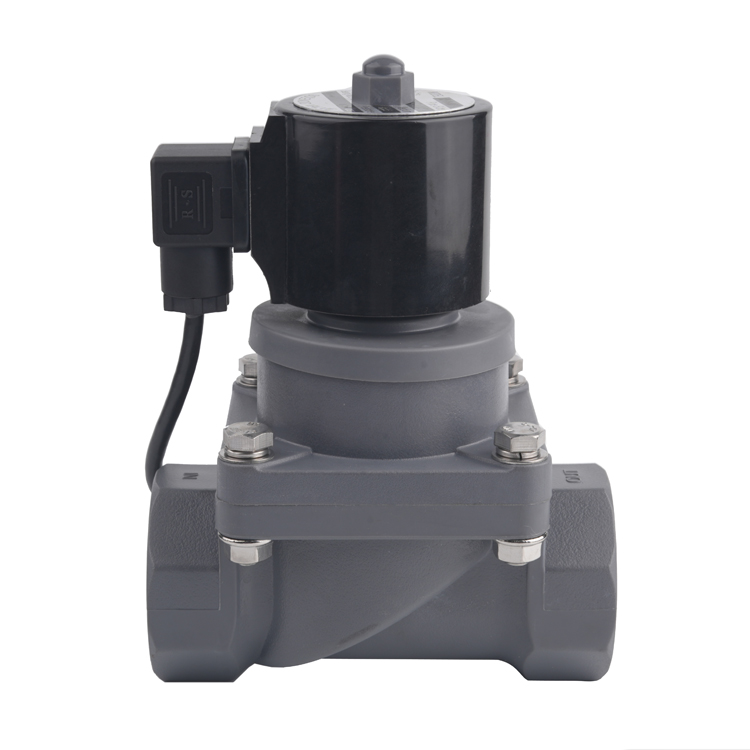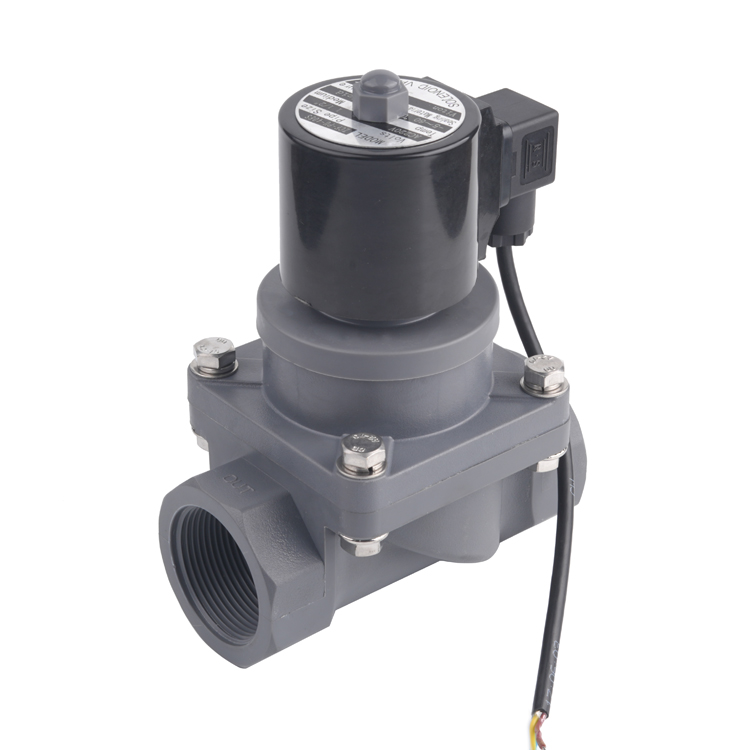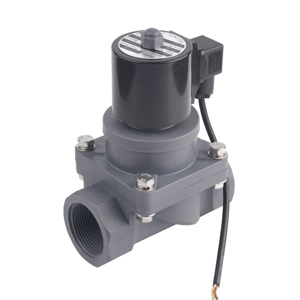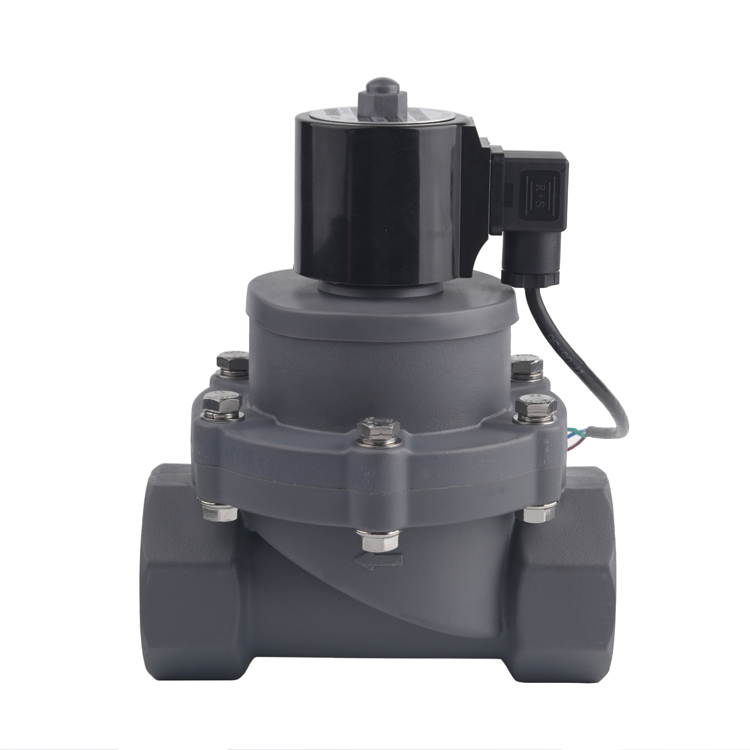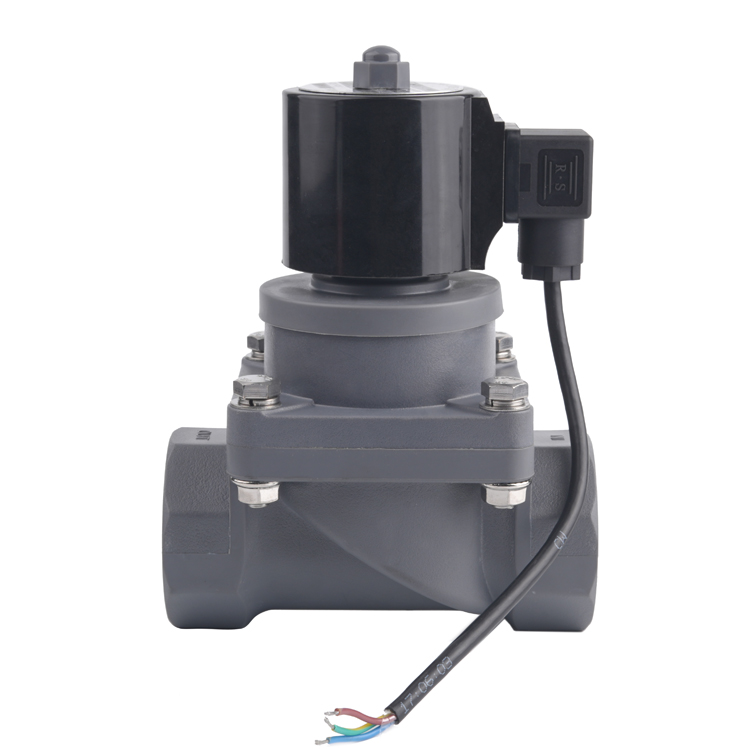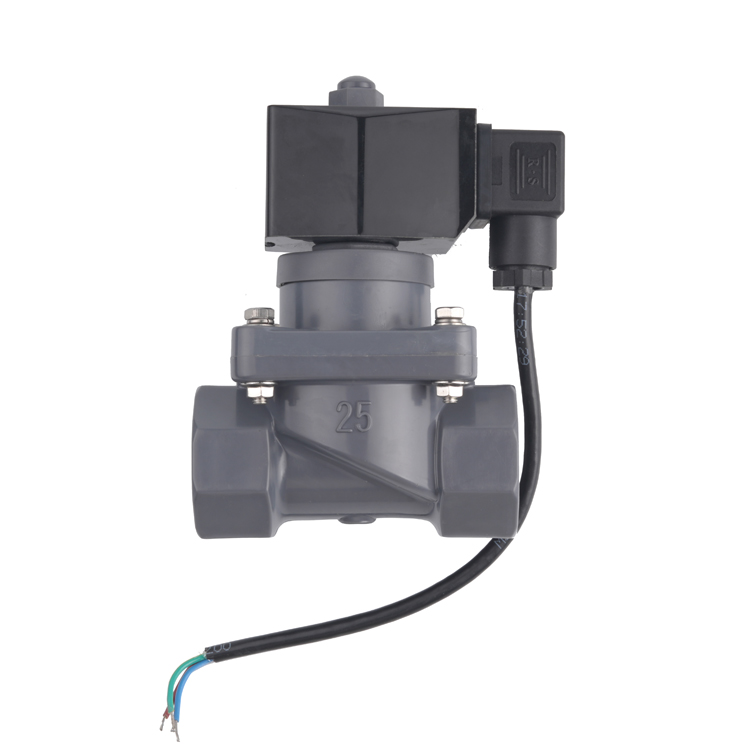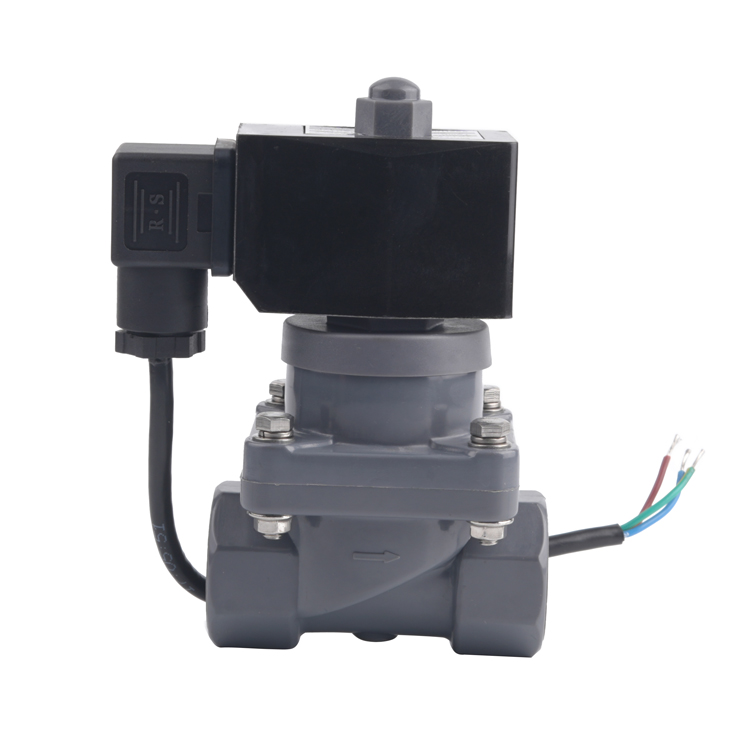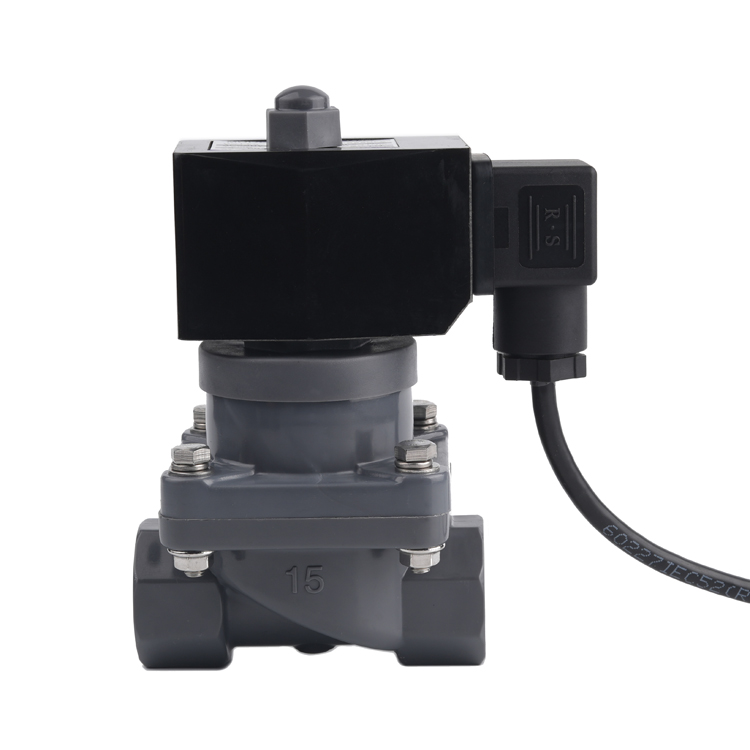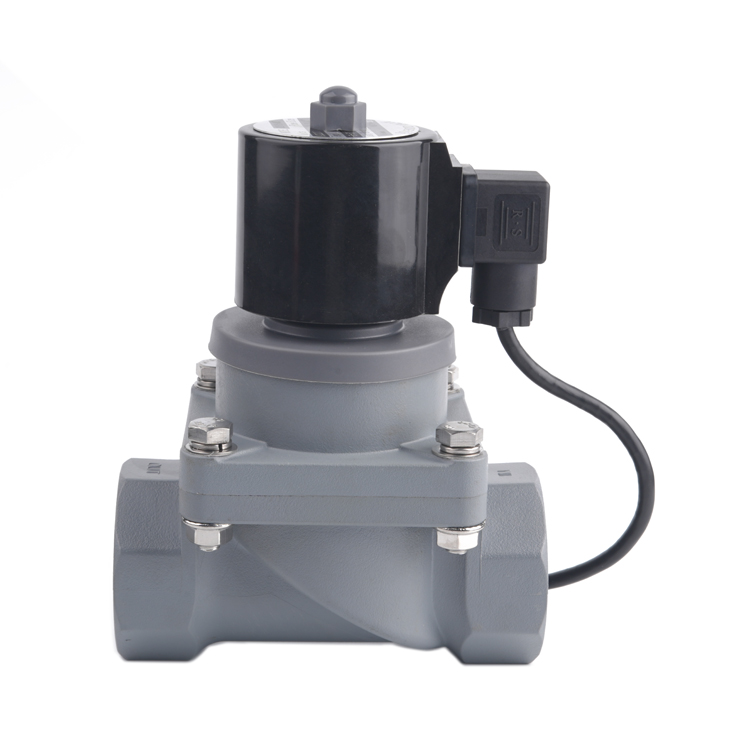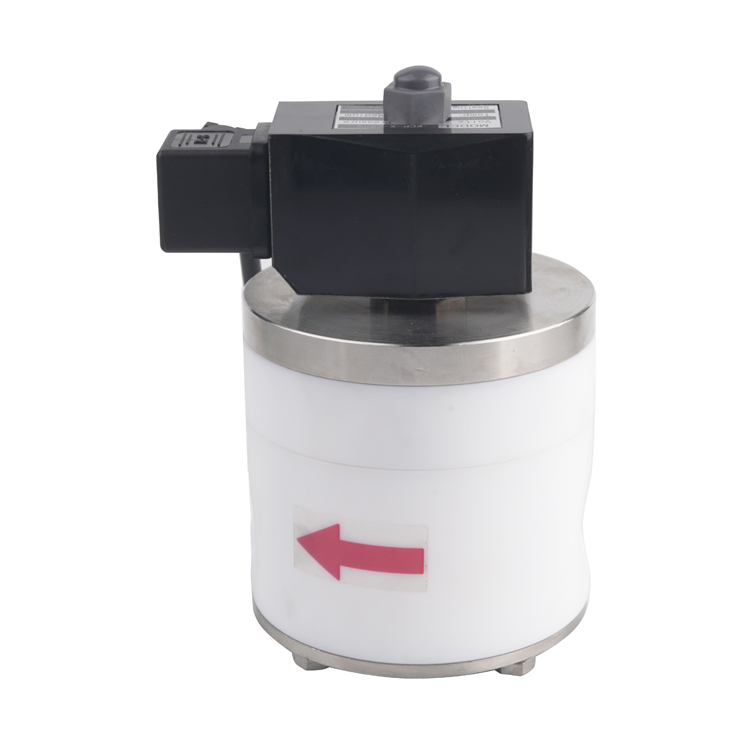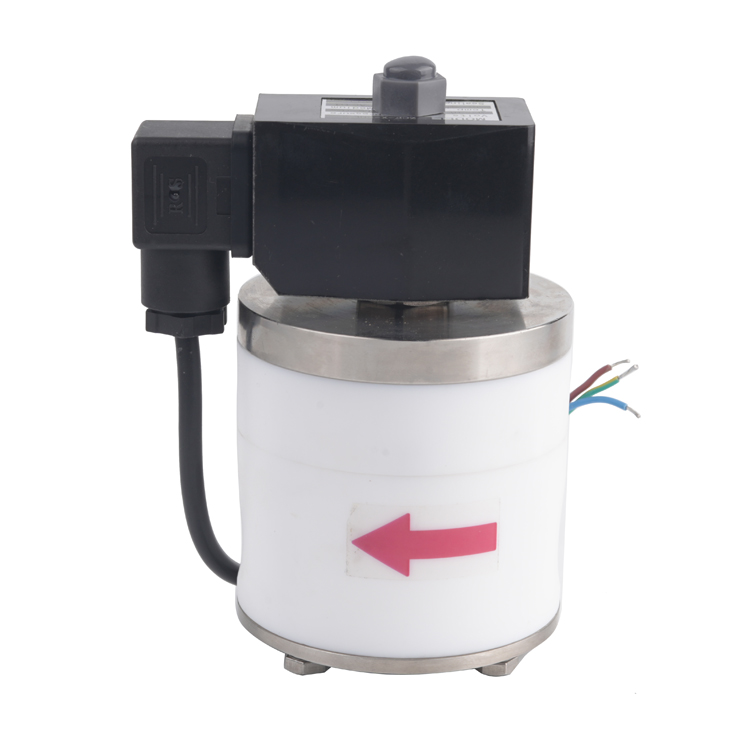ZCF-PX-40ES
Product classification:ZCF Anti-corrsive Solenoid Valve
Medium: acid、alkaline (liquid, gas)
Medium temperature: -10~80 ℃
Environment temperature: -10~50℃
Working pressure: 0.3~ 6bar
Working type: pilot diaphragm type (NC)
Valve body material: UPVC
Sealing material: VITON/EPDM
Interface: G thread/ NPT thread/flange/loose joint
Working voltage: AC220V, Initial power: 170VA, Rate of work:9VA;
AC110V, Initial power: 82VA Rate of work:7VA;
DC24V, Initial power: 75W, Rate of work:8W
IP65 H degree, Lead length: 0.2m
Solenoid valves are devices used to control the flow of liquids or gases, and they are commonly employed in various industrial and commercial applications, including the following areas:
Automation Control Systems: Solenoid valves are widely used in automation control systems to regulate the flow of liquids or gases, such as in automated production lines, industrial robots, and manufacturing equipment.
Hydraulic and Pneumatic Systems: Solenoid valves play a crucial role in hydraulic and pneumatic systems, controlling the direction and pressure of hydraulic oil or compressed air, used in applications like hydraulic jacks, pneumatic cylinders, and hydraulic machine tools.
Cooling and Heating Systems: Solenoid valves can be utilized to control the flow of cooling water or heating fluids in cooling equipment or heating systems, such as air conditioning systems, heating systems, and cooling towers.
Drinking Water and Wastewater Treatment: Solenoid valves can be applied in drinking water treatment and wastewater treatment systems to control water flow, filtration, and mixing operations.
Medical Devices: In medical equipment, solenoid valves are used to control the flow of gases and liquids in devices like respirators, infusion equipment, and dialysis machines.
Laboratory Equipment: Solenoid valves are widely used in laboratories for the automated control of liquid or gas distribution and flow, in equipment such as automated experiment setups, liquid chromatographs, and gas chromatographs.
The advantages of solenoid valves include:
Fast Response: Solenoid valves can rapidly open or close, providing quick fluid control, suitable for applications that require rapid response.
Precise Control: Solenoid valves offer precise fluid control, allowing for the adjustment of fluid flow and pressure by modifying the valve's operation.
Remote Control Capability: Solenoid valves can be integrated with control systems, enabling remote control and automation, reducing the need for manual intervention.
Durability: Solenoid valves typically have a long service life and can operate in various harsh environments, including high temperatures, low temperatures, high pressures, and corrosive media.
Multiple Specifications and Types: Solenoid valves come in various specifications and types to meet the diverse requirements of different applications, including varying sizes, materials, and operating principles.
In summary, solenoid valves play a critical role in various industrial and commercial applications, providing precise fluid control and automation capabilities, which enhance efficiency, reliability, and safety.
Medium temperature: -10~80 ℃
Environment temperature: -10~50℃
Working pressure: 0.3~ 6bar
Working type: pilot diaphragm type (NC)
Valve body material: UPVC
Sealing material: VITON/EPDM
Interface: G thread/ NPT thread/flange/loose joint
Working voltage: AC220V, Initial power: 170VA, Rate of work:9VA;
AC110V, Initial power: 82VA Rate of work:7VA;
DC24V, Initial power: 75W, Rate of work:8W
IP65 H degree, Lead length: 0.2m
Solenoid valves are devices used to control the flow of liquids or gases, and they are commonly employed in various industrial and commercial applications, including the following areas:
Automation Control Systems: Solenoid valves are widely used in automation control systems to regulate the flow of liquids or gases, such as in automated production lines, industrial robots, and manufacturing equipment.
Hydraulic and Pneumatic Systems: Solenoid valves play a crucial role in hydraulic and pneumatic systems, controlling the direction and pressure of hydraulic oil or compressed air, used in applications like hydraulic jacks, pneumatic cylinders, and hydraulic machine tools.
Cooling and Heating Systems: Solenoid valves can be utilized to control the flow of cooling water or heating fluids in cooling equipment or heating systems, such as air conditioning systems, heating systems, and cooling towers.
Drinking Water and Wastewater Treatment: Solenoid valves can be applied in drinking water treatment and wastewater treatment systems to control water flow, filtration, and mixing operations.
Medical Devices: In medical equipment, solenoid valves are used to control the flow of gases and liquids in devices like respirators, infusion equipment, and dialysis machines.
Laboratory Equipment: Solenoid valves are widely used in laboratories for the automated control of liquid or gas distribution and flow, in equipment such as automated experiment setups, liquid chromatographs, and gas chromatographs.
The advantages of solenoid valves include:
Fast Response: Solenoid valves can rapidly open or close, providing quick fluid control, suitable for applications that require rapid response.
Precise Control: Solenoid valves offer precise fluid control, allowing for the adjustment of fluid flow and pressure by modifying the valve's operation.
Remote Control Capability: Solenoid valves can be integrated with control systems, enabling remote control and automation, reducing the need for manual intervention.
Durability: Solenoid valves typically have a long service life and can operate in various harsh environments, including high temperatures, low temperatures, high pressures, and corrosive media.
Multiple Specifications and Types: Solenoid valves come in various specifications and types to meet the diverse requirements of different applications, including varying sizes, materials, and operating principles.
In summary, solenoid valves play a critical role in various industrial and commercial applications, providing precise fluid control and automation capabilities, which enhance efficiency, reliability, and safety.
Related products


